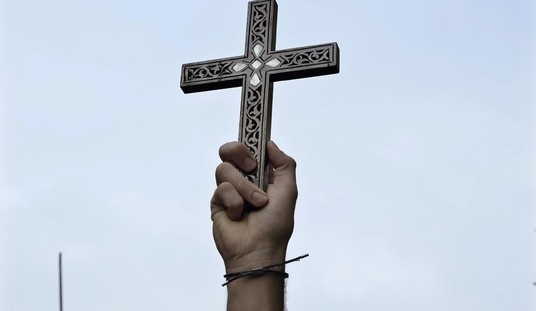Florida is home to the Cape Canaveral launching site (known locally as the “Space Coast”) and that is appropriate for it gave a 50 to zero delegate rocket boost to Mitt Romney, more than doubling the combined votes of conservatives Newt Gingrich and Rick Santorum, thus helping his campaign achieve lift-off. That batch of 50 winner-take-all delegates put Mitt back in the delegate lead, a nice comeback from his drubbing in South Carolina. There’s more good news for Mitt, as the schedule sets Romney up for a nice, but not necessarily decisive, February run. For the non-Romney candidates, February may turn out to be the cruelest month.
Republicans will take a slight breather in February, as only 4% of the total delegates to the 2012 National Convention will be awarded and there is only one debate slated. (In fact, Michigan was penalized half its delegates for moving its primary up before March 1.) It cannot be emphasized enough that this 2012 Republican race has been extremely volatile with at least half a dozen shifts in momentum — remember when Donald Trump, Michele Bachmann, Rick Perry, and Herman Cain all briefly led the national GOP polls? So no one should be surprised if February adds in some unexpected twists. Nevertheless, we’ll hazard a few predictions here.
Based on the first four contests, we can look at the voting patterns and make some projections.
Due to his win in Iowa and previous strength in rural Pennsylvania, we can safely say that Rick Santorum does well with middle-class religious voters, especially farmers, in the north. On the other hand, based on his sweep of both the South Carolina hills and the rural north Florida Panhandle, Newt Gingrich is popular with white Southerners. With strong support in the suburbs of Des Moines, Boston, and the east and west coasts of Florida, Mitt Romney’s base is in the upper-middle class, i.e., business and other economic conservatives. We can also say that Ron Paul has a small but fervent base (10-19%) among isolationists and true believers in all forms of liberty.
On the February schedule, there will be primaries in Arizona and Michigan plus caucuses in Colorado, Maine, and Minnesota. (There is also a non-binding primary in Missouri.) Only Minnesota is open to non-Republicans and only Arizona is a winner-take-all contest.
As expected, Romney repeated his 2008 win in Nevada, claiming 50% of the vote for the first time. Gingrich finished a distant second at 21%. The easiest predictions are for Romney victories in Maine and Michigan. He won both in 2008 and with good reason: Maine is on his New England home turf and he grew up in Michigan. In the latest round of polling, Romney leads in Michigan by 15% and in Arizona by a whopping 24%. It will be big and bad news for Romney if he loses any of those three states. Romney also won Colorado and Minnesota last time, but John McCain did not seriously contest them. Minnesota has a strong evangelical vote among Republicans and, like Iowa, is Rick Santorum’s best chance for an upset.
Romney has an organization in place already in Colorado, but the state also has a quirky independent streak that could help Ron Paul. With his energetic base, Paul is guaranteed to get at least a few delegates in every state except Arizona, especially the caucus states. Barring a major change in momentum, Romney should come out of these states with a minimum of 100 delegates, thereby padding his lead.
Newt’s best chance for a February win is probably Arizona on February 28. After all, there will be the month’s only debate the week before (Newt’s forte), and more importantly, Arizona is the home of the original “New Right” insurgent, Barry Goldwater. This will be the best chance to kick over a revolt against the Eastern Establishment, and as an added bonus, it’s a winner-take-all primary. By winning all 29 of the Grand Canyon State’s delegates, Newt can erase some of the losses he’ll almost surely see in Michigan, Maine, and Nevada.
Mitt Romney is still benefiting from former Census Bureau Director Richard Scammon’s First Rule of Politics: “Happiness is a divided opposition.” And in Florida, Romney took advantage of the divided opposition to win a plurality of 46% and score a 50-0 shut-out in delegates. Florida exit polls showed that Romney won overwhelmingly among moderates (59-20%), while a split among conservatives allowed Romney to carry that group with just 41%. If either Gingrich or Santorum can consolidate the conservative majority — who made up 69% of Florida Republicans — they can still win. (But Santorum made it clear that he thinks Newt should be the one that drops out.) Another reason that the race should go on is that over 85% of the delegates will be chosen after March 1.
It was no accident that during the former speaker’s Florida concession speech, Gingrich supporters held up signs that read: “46 States to Go.” And in February, most of the delegates will be awarded on a proportional basis, thus assuring all the candidates of some delegates. Even after his impressive Florida win, Romney still hadn’t garnered even 10% of the 1144 delegates he needs for a majority. So, there’s lots more campaigning to go.
Super Tuesday looms on March 6, when Gingrich will play on home turf (Georgia) and have a good opportunity for wins in Tennessee, Oklahoma, and Idaho as well. But Romney has a chance for an excellent February and has gotten off to a good start with his strong Nevada win.
What does all this mean? I expect the Romney-Gingrich race to go on until at least April.









Join the conversation as a VIP Member